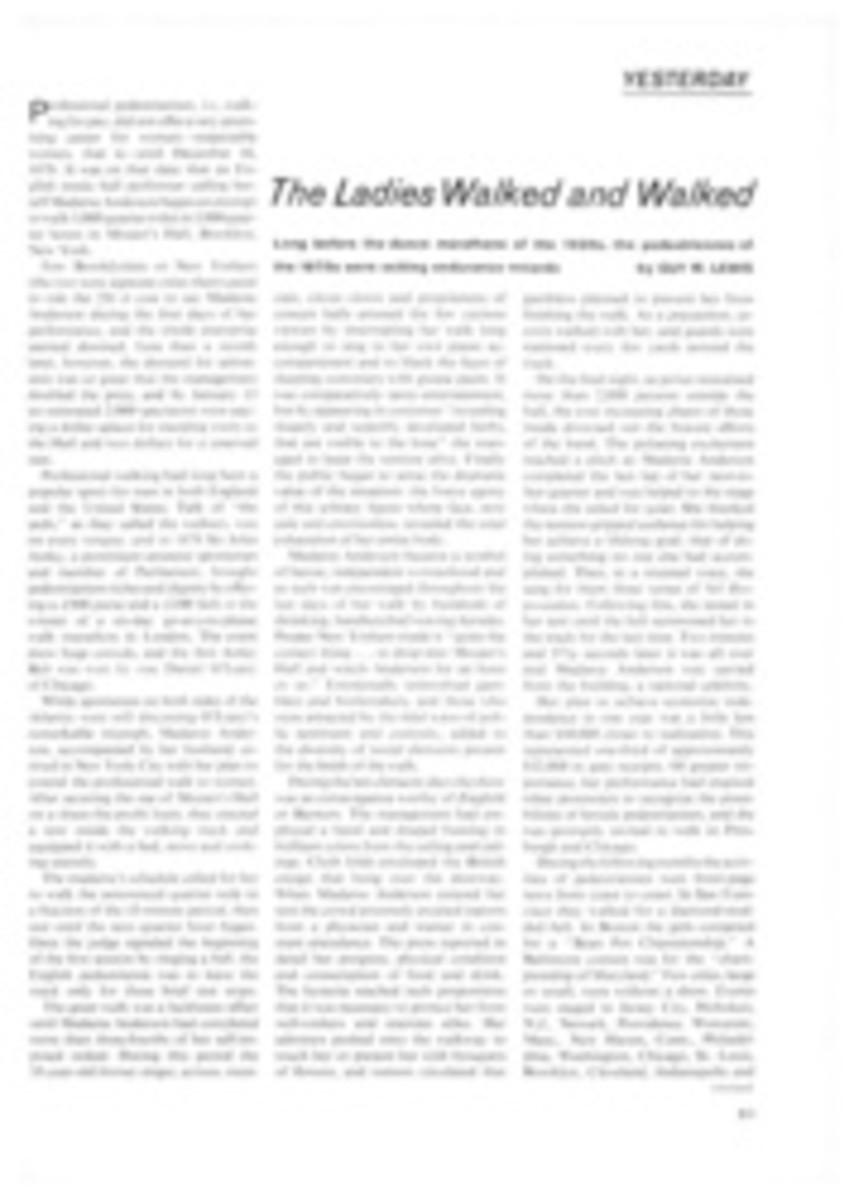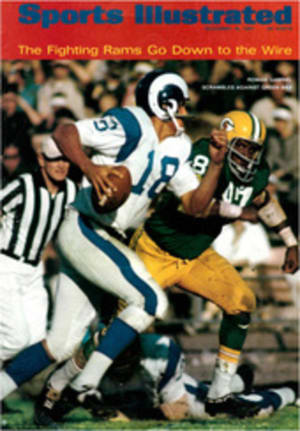
Some new battles are boiling in the Coral Sea
Just beyond Australia's Great Barrier Reef, a scant 35 miles off the northern coast of Queensland, the biggest black marlin in the world swim in the warm tropic waters. No one can say exactly how big the fish are but the handful of anglers who have fished for them know with certainty that they are there. They know, too, that it is only a matter of time before the rest of the angling world discovers their secret: that these Australian waters are the finest big-game fishing grounds anywhere on the globe today.
Here are Pacific sailfish in numbers to make those off Baja California, Acapulco and Pi√±as Bay seem insignificant. There are countless wahoo and yellow-tail, bonito and cobia, Allison and bluefin tuna, dolphin and trevally. great schools of king mackerel averaging 35 pounds and some running as large as 100. There are queenfish, among the most spectacular and acrobatic fighters in the sea. and giant turrum, which grow to more than 70 pounds and can hold an angler in the fighting chair for hours. There are barracuda, and an Australian potpourri of sharks—bronze whalers, makos, tigers and whitepointers.
But the fish that overshadows all others in this fish-filled pocket of the South Pacific is the black marlin. Fewer blacks have been caught than any other marlin—blue, white, or striped—and probably more have been lost of those hooked than any other species. Only the broad-bill swordfish is qualified in stamina and sagacity to rank in a class with the black, and ever since men began catching big fish they have argued as to which is the ultimate trophy. In size there is less room for debate. The largest fish ever taken on rod and reel, with the exception of sharks, is a 1,560-pound black marlin. It was taken in 1953 by Alfred Glassell off Cabo Blanco, Peru (SI, March 19, 1956) and. for a time, it seemed as if the biggest marlin anywhere were there. Since then anglers have probed every current off Cabo Blanco and farther south along the Chilean coast, off Ecuador and Panama, Bassaruba, Mozambique, Mauritius. Honolulu and New Zealand. But, for all their efforts, they have failed to find a bigger fish. In all those 14 years, in fact, only a few black marlin over 1,000 pounds have been caught anywhere.
Yet in less than one month this fall, three 1,000-pounders were taken from a single stretch of water, barely a three-hour boat ride from the city of Cairns. At least a dozen giant marlin estimated to be even bigger than these were hooked and lost in the same water. No one can guess how many more might have been taken had there been more anglers. There were only three boats fishing during that period, and they did not go out every day.
That any boats went out at all can be credited to a thin, blond American named George Bransford and to the vagaries of fate which landed him, during World War II, on the coast of northern Queensland. Long after he returned to the States and the neon and tinsel of Fort Lauderdale, where he worked first as a mate, then as captain of his own charter boat, Bransford dreamed of the white sand beaches and wet, green mountains of the Queensland coast. Season after season, as he fished the Atlantic from Miami to Palm Beach, his mind fished the bluer waters beyond the Great Barrier Reef. The promise of those faraway islands grew more insistent as the years went by. In 1963, Bransford returned to the place he could not forget.
For three months he explored the northern coast around Cairns, sometimes alone, sometimes with the commercial fishermen who spend their lives on the reefs. These men often saw big fish surfacing in the waters beyond the outer reef, they told him, but no one had fished for the monsters. With their small boats and inadequate tackle, they were neither equipped nor eager to catch such giants. Even the Japanese, they said, had given up fishing off the Great Barrier because too many of their nets had been mauled and destroyed by fish of monstrous size.
Bransford returned to Florida, sold his charter business, and with his wife and two young children moved to Cairns. It took the better part of a year to have the Cairns firm of H. Collis & Son build him a suitable boat—a 32-foot rough copy of a Florida sportsfisherman with a planing hull, an 11-foot beam, and a Perkins 135 single diesel. It took several months more to fit out the Sea Baby for the kind of fishing he planned to do.
Sailing out of Cairns, the major opening in the Barrier is known as the Grafton Passage. It runs past Green Island, a combination national park-tropical honky-tonk where workmen and their families come on Sundays to visit the aquarium, picnic in the park and hand-line from the party boats that do a brisk weekend trade.
Just beyond Green Island is Arlington Reef, almost 10 times as large but underwater at high tide. Arlington lies to the west of the Grafton Passage. To the east are Euston, which is marked by an unlighted beacon, and Flynn, both submerged but made discernible by breaking surf. These reefs lie near the edge of the continental shelf, which here does not fall off in one sharp dip but gradually, in a series of steps. A riptide flows across the edge of the shelf, and for most of the year the current runs from north to south.
What brought Bransford back day after day to this particular part of the outer reef was a three-mile-long, 100-yard-wide shoal called Jenny Louise, which lies within a mile of the continental drop-off. Between Jenny Louise and Flynn the waters average 25 fathoms, but the shoal itself is a bare six fathoms deep at its north end, only three fathoms deep at its south end. Beyond it, the shelf drops off to 45, then 96, then several hundred fathoms, and there is nothing all the way to the Solomon Islands but the vast expanse of the Coral Sea.
It was January when Bransford first fished along Jenny Louise. This was the peak of the Australian summer, and water temperatures ranged as high as the mid-80s, more than 10° above the temperatures marlin seem to prefer.
It was not until the end of the Australian autumn, as the waters began to cool and calm, that Bransford had a chance to really fish the area. He noticed that the number and variety of fish on the shoal increased rapidly as winter approached. He found big dolphin and tuna among the wahoo and mackerel. By late July and early August small marlin began appearing on the inside reef and sailfish migrations moved through the area in great waves. But the big fish, the monster marlin, did rot show up until late August.
A month later, on September 25, 1966, Bransford radioed from the Sea Baby that the first black marlin weighing over 1,000 pounds ever to be caught off the coast of Australia was on its way back to the dock at Cairns. It had been taken by a young Floridian named Richard Obach who had drifted into Cairns, hired on as Bransford's mate, and happened to be the only one in the cockpit when the fish struck. (Bransford's client that day was below, being seasick.) Obach's fish, at 1,064 pounds, topped the world's record in the 80-pound-line class by 230 pounds. It was a suitable start for a new sport.
In November 1966, Jack Taylor, an experienced big game angler from Melbourne, fought a black from the Sea Baby for four hours and 40 minutes. The double line was on the reel at least 15 times. Eventually the rod-tip guide bent under the pressure and snapped. The fish, Bransford is certain, would have been a new world's record. He is equally certain that there are black marlin in the waters off Jenny Louise that are so large they will make the 1,560-pound record fish look dainty by comparison.
I was there when the third of this season's triumvirate of 1,000-pounders was caught in October. It weighed 1,001 pounds as compared to 1,156 and 1,208 for the two taken within a week of each other at the end of September. This made it the smallest of the four 1,000-pound-plus fish taken off Cairns since the big game fishing began there little more than a year ago, but it was the biggest creature I have ever seen pulled from the sea.
What makes the size of this fish even more difficult to relate to trophies of normal dimension is the fact that while it was being fought by a Melbourne builder named Robert Oliver, it was joined in the water by three other giant marlin. One was at least half again as large as the fish on the line; the others were close enough to be over 1,000 pounds. These fish certainly provide ample evidence that the marlin are there. But, remarkably, the anglers are not. One of the reasons there are so few boats fishing out of Cairns is that there is a notable absence of facilities for mooring and docking them. All waterfront property in Cairns to 100 feet beyond high-water mark is owned by the Queensland government, which has shown no enthusiasm for parting with it. As a result, Dennis Allwood, a 26-year-old former airline pilot, has had to moor his boat to an abandoned tanker a half hour's run from the nearest place he can take on passengers. Allan Collis for a time was literally up a creek with his boat Marlan. He has recently wangled a more advantageous spot not far from the city dock.
Sooner or later, as word of the fishing off Cairns spreads and anglers from around the world descend upon the city, the problem of anchorage—and the variety of minor frictions which have arisen—should be worked out. The problem that will be more difficult to solve is how to land the giant fish that are there. The bigger a fish gets, the bigger the odds against landing it. "This is not like other sports in which you are competing with people," Bransford says. "It is not even like other fishing. Here you must first outwit a creature that has lived in the ocean 30 or 40 years. He has acquired a lot of knowledge in that time and he wises up very quickly to lures and baits. Then if you do induce him to take the bait, you still have to hold him. Most anglers are not up to landing a fish this big—physically or in terms of experience. Generally it is a mistake by the angler, the boat, or the crew that eventually loses the big fish.
"But even when there are no mistakes, we still lose many more than we land. There are fish in these waters that are just too big for the gear we are using. When a fish gets up to around 3,000 pounds, 130-pound tackle is pretty much inadequate.
"I know," he concludes, "there are fish that size here. I have not only seen them, I have been tied to them."
PHOTO
PHOTO
BRANSFORD ABOARD THE "SEA BABY"

